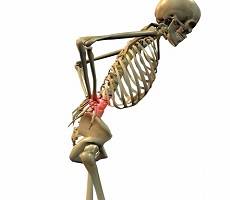October 9, 2013
iPosture generation warned to sit up straight or risk a lifetime of back pain
Ask anyone under twenty, “what is a VDU?” and they’ll probably think you’re referring to a “social” disease. Yet, despite the fact that tablet technology is in the ascent, the workplace procedure that is still used to help safeguard office workers from developing back, neck or other muscular skeletal problems is the workstation audit, as recommended in the HSE’s Working with VDUs guidance. Most under 25s would prefer to slump comfortably over a BYOD anyway, and as a result of these less than ergonomic habits , a massive 84 per cent of 18-24 year olds have admitted to suffering some incidence of back pain in the last 12 months, according to new research.
This is by no means just the odd tweak, the average number of working days lost to back pain is higher for this age group than any other; 1.5 days more a year than those of their parents’ generation. A survey of 3,000 adults, from Simplyhealth, shows a nation on the point of a potential back pain epidemic fuelled by rising use of new, hand held technology and a decline in the awareness of good posture and its role in pain prevention. Experts are warning that this new ‘iPosture generation’ are developing bad habits that could lead to back pain problems in the future.
The results showed that almost all age groups spend as much time in front of a PC, laptop or tablet screen in total as they do asleep in bed, some even more so. A combination of work and home screen time (excluding traditional TV) means that over 55s spent an average of 6.64 hours a day (the least) versus a massive 8.83 hours a day in front of screen time for a typical 18-24 year old.
However, key differences seem to emerge when it comes to the different generations’ use of technology. Two thirds (67 per cent) of 18-24 year olds agree they either slouch or hunch in front of their PC or other devices at work and almost half of this age group replicate this at home (49 per cent). Their parents on the other hand (45-54 year olds) are more than twice as likely to sit up straight, on a chair, with their PC or laptop in front of them.
Dr Brian Hammond, Acting Chief Executive Officer and Chairman of the charity Backcare said: The vast majority of people experience back pain in the lower back. However, this survey data shows that those in the 18-24 year old bracket are more than twice as likely to experience pain in the middle of the back, and more than three times more likely to have pain around the upper back and back of the neck.
“Slumping and hunching over computers and hand-held devices appears to be a contributory factor in the difference in types of back pain between the generations.”




















Musculoskeletal disorders rate highlights scale of ergonomic challenge
February 25, 2014 @ 3:09 pm
[…] being amended in 2002, that’s still aeons in technology terms. The typical modern worker now routinely uses tablets, mobiles and other digital devices; whether at work, on the move or at […]